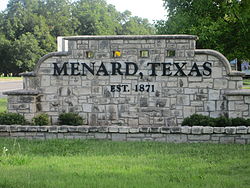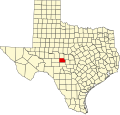2000 census
As of the census [3] of 2000, 1,653 people, 666 households, and 438 families resided in the city. The population density was 803.5 inhabitants per square mile (310.2/km2). The 851 housing units had an average density of 413.6 per square mile (159.7/km2). The racial makeup of the city was 84.94% White, 0.67% African American, 0.60% Native American, 0.36% Asian, 0.06% Pacific Islander, 11.98% from other races, and 1.39% from two or more races. Hispanics or Latinos of any race were 39.32% of the population.
Of the 666 households, 31.8% had children under 18 living with them, 50.2% were married couples living together, 10.8% had a female householder with no husband present, and 34.1% were not families. About 31.4% of all households were made up of individuals, and 20.0% had someone living alone who was 65 or older. The average household size was 2.42 and the average family size was 3.03.
In the city, the age distribution was 27.2% under 18, 6.0% from 18 to 24, 23.7% from 25 to 44, 22.6% from 45 to 64, and 20.6% who were 65 or older. The median age was 40 years. For every 100 females, there were 97.3 males. For every 100 females 18 and over, there were 87.5 males.
The median income for a household in the city was $19,698, and for a family was $27,125. Males had a median income of $21,094 versus $17,857 for females. The per capita income for the city was $12,768. About 26.5% of families and 33.1% of the population were below the poverty line, including 45.4% of those under age 18 and 28.2% of those age 65 or over.










